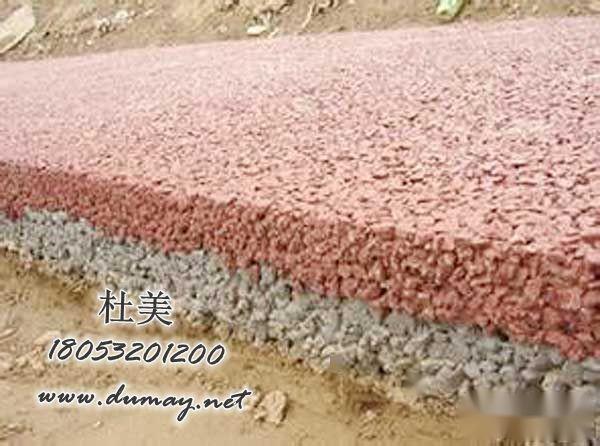Permeable Pavement, as a new environmentally friendly and ecological road material, has increasingly attracted attention, especially in the industry. The surfaces of modern cities are often covered by reinforced concrete buildings and impermeable pavements. Compared to natural soil, conventional concrete pavements lack the ability to breathe, absorb heat, and permeate rainwater, leading to a series of environmental issues. Consequently, concrete has been consistently viewed as a culprit damaging nature. However, by forming continuous open spaces, it is possible to create a connection point with the natural environment.
As an environmentally load-reducing concrete, Permeable Pavement is an innovative material for improving and restoring the damaged earthly environment, allowing human life to coexist harmoniously with nature and ensuring sustainable development.
Permeable Pavement is also known as ecological permeable pavement, permeable concrete, and no-sand concrete,、 made from aggregates, binders, additives, cement, water, and other materials mixed uniformly and laid as a pavement. It has higher strength and durability than traditional concrete, meeting the mechanical performance, usability, and lifespan requirements of structures; it is compatible with the natural environment, reduces the burden on the earth and ecological environment, and achieves the recyclable use of non-renewable resources; it possesses excellent usability, providing a mild, comfortable, and convenient living environment for humanity.
Permeable Pavement allows rainwater to rapidly infiltrate the surface, effectively replenishing groundwater and alleviating the urban heat island effect,
protecting urban natural water systems from damage, showcasing strong environmental value. At the same time, it addresses the common issue of water accumulation on regular pavements, enhancing safety and comfort for pedestrians, which is significant for improving the living environment.
Permeable concrete retains the characteristics of traditional concrete while overturning its monotonous gray color, presenting a dazzling array of colors. Utilizing various colors allows the pavement to integrate with buildings and landscapes, creating a warm and harmonious living environment!
Functional Characteristics:
1、High permeability. Permeable Pavement has a porosity of 15%-25%, allowing a permeability rate of 31-52 liters per meter per hour, far exceeding the discharge rate of effective rainfall under excellent drainage conditions.
2、High load-bearing capacity. According to national inspection agencies, the load-bearing capacity of Permeable Pavement can fully meet the load standards of C20-C25 concrete, surpassing that of conventional permeable bricks.
3、Excellent decorative effect. Permeable Pavement features a color-optimized ratio plan that can collaborate with designers to achieve various environmental and characteristic decorative needs, which is often difficult for conventional permeable bricks to accomplish.
4、Easy maintenance. Concerns about pore blockage are unnecessary; the unique permeable paving system allows for easy resolution with high-pressure water cleaning.
5、Frost and thaw resistance. Permeable paving has stronger frost and thaw resistance than conventional concrete pavements and will not crack from freeze-thaw cycles due to its structure featuring larger pores.
6、Durability. The wear-resistant function of permeable pavement is superior to asphalt and comparable to conventional pavements, avoiding the drawbacks of short lifespan and economic inefficiency commonly found in traditional permeable bricks.
7、High heat dissipation. The material's lower density (15-25% voids) reduces its heat retention capacity, while the unique pore structure allows for lower underground temperatures to transfer to the surface, thereby decreasing the overall surface temperature. These features enable the permeable paving system to have heat absorption and storage capabilities similar to surfaces covered with natural vegetation.
Applications
Municipal walkways, garden paths, urban squares, residential communities, parking lots, commercial office buildings, outdoor sports venues, bicycle lanes, and children's playgrounds (badminton courts, basketball courts, etc.).













